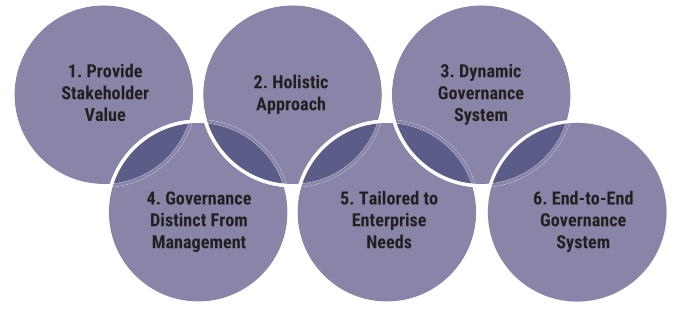
Principles
As for applying Architecture discipline to the Enterprise, it’s about considering the overall entity, its purpose, and its implantation in the environment.
Then, it’s also about considering its heterogeneity and its dynamics.
The conceiving work starts by identifying and integrating the needs and the constraints.
Constraints, in architecture, does not mean pain-points. It means considerations that guide the architect in his creative work.
The principle consists of identifying criteria and their relevancy in terms of shaping.
Another point is that shaping happens at scale.
e.g., when conceiving a hospital, you don’t start by a sole care room.
From overall to detailed levels, shaping involves different scales and granularities. [“Scale” in Enterprise Architecture]
Architecture starts by defining main axes of shaping which will constitute generic criteria for further and more detailed shaping (i.e., this is what makes the
scheme scalable and adaptable).
Yet another point is that Architecture can integrate it all because it does not shape from a viewpoint, a particular focus or any specific concern.
Here’s the thing, a built isn’t made of views, isn’t an assembly of views. Views are used to illustrate a conceived built.
Architecture addresses the Enterprise constitutively. This is how and why Enterprise Architecture can address the Enterprise as a whole.
In fact, this is by shaping the whole, constitutively, that you can fulfil respective concerns.
Another point is that Architecture is about shaping space.
The principle is to define the different spaces needed and dedicated to the different activities.
The difference with building architecture is that the space size is limitless.
The interest being the assignation of the space. It also means that Architecture is not about modeling activities but shaping their dedicated spaces.
Components exists as such, within space, and not through their links representing their usages.
And this is the first key point to introduce adaptability.
In summary, while current practices are stuck in modeling, at a detailed level, professional Architecture (building) shapes space and provides an environment for modeled activities. That environment, being shaped, already integrates the relevant generic criteria in order to assure overall coherence.
This is what introduce stability.
Relevancy
Overall, thanks to its original approach, EXCOGITEA® allows to address concerns and brings concepts which are overlooked, ignored or even unknown by current practices, and which yet are key, foundational.
Shaping the Enterprise as a whole is foundational.
Current practices consider more specific scopes and sub-domains (BDAT, security, …), but, unless the whole is shaped, their real boundaries, and their real correlations, cannot be known.
Considering scales (natural in building architecture discipline) is key.
It allows to manage granularities, of constituents and stakeholders sights and scopes.
Besides, in terms of designing, it can be used to address genericity and modularity. This is also what makes correlations, from overall coherence to diversity of specificity.
Whether items are static or dynamic, EXCOGITEA® brings a constitutive approach.
It considers items not only because of their usage but regarding their existence, their nature.
In that sense, it is also viewpoints–agnostic. E.g.: a data/information can be seen through a business viewpoint, a technical viewpoint, a legal viewpoint.
While current practices deal with separated canvas (Business model, Operating model, Capability map, …) and wander what can be the correlations, EXCOGITEA® addresses the shaping of the built, per say. And a built isn’t an assembly of views. Views are derived from the built.
Instead of anticipating a resulting mesh, EXCOGITEA® shapes spaces, purposely. [Enterprise … purposely Architecture]
Correlations are defined at generic level, through shaped spaces. Links between components can be created and modified at will, upon needs.
This is what makes the scheme adaptable.
Besides, EXCOGITEA® is aligned with COBIT® Principles. Not only for IT though, but furthermore extended to the whole Enterprise:
COBIT® 5

- 1) Meeting stakeholders needs
- 2) Covering the Enterprise end–to–end
- 3) Applying a single integrated framework
- 4) Enabling a holistic approach
- 5) Separating governance from management
COBIT® 2019

- 1) Provide stakeholder value
- 2) Holistic approach
- 3) Dynamic governance system
- 4) Governance distinct from management
- 5) Tailored to Enterprise needs
- 6) End-to-End governance system
And even more, thanks to its original approach, EXCOGITEA® goes way beyond “a single framework” and provides “a single built”.
It relegates frameworks to cogitation tools.
It means that it lowers and even eliminates the risk for Organisations of having to choose “the right one” to adopt/adapt.
Benefits
ECOGITEA® is granting Companies a consciousness of their built.
Besides the building activities considerations, ECOGITEA® allows to evaluate Operational Excellence and trigger Enterprise optimization.
Furthermore than the operational sight, EXCOGITEA® covers tactical and strategic sights, which at some point are visions of the built in time.
EXCOGITEA® provides realistic and accurate view of the built which integrates all required criteria (in terms of impact, feasibility, costs, …) to support decision-making.
EXCOGITEA® re-gives sense to Enterprise Architecture.
Its original approach allows to brings what’s missing to current practices and it allows to frame them when needed.
EXCOGITEA® constitutes a foundational context, a cradle for existing related disciplines. Therefore, the principle isn’t to deny them, but to support them.
E.g.:
Business Architecture
Enterprise Architecture addresses the shaping of an ”Enterprise” type entity, hence whatever the specific Business domain of the Enterprise. EXCOGITEA® provides clarification of boundaries and allows Business actors to focus on the Business. While several actors provide ”prefab” models specific to business and industry types, EXCOGITEA® allows to assess maturity and coherence of those models.
Security Architecture
While current practice of security ”architecture” relates to defining security principles, EXCOGITEA® provides the built required to implement it. Not to mention that the awareness of the Enterprise’s built eases to identify security concerns.
Program management and development
EXCOGITEA® provides the required context to support it, in terms of accuracy of views, flows of dynamics, correlations from strategic milestones to realization.
Data Architecture & Data Governance
Data Governance is a mature discipline. In the meantime, Data Architecture mostly relates to a mapping of data usage within applications. EXCOGITEA® goes further and identifies the need of data to be organized, precisely to support their uses. EXCOGITEA® clarifies the boundaries, identifies and defines a dedicated space for data.
“Enterprise Architecture leads to address Data and its Governance.”
Human Resources
The human aspect in the current Architecture practices is reduced to a human stakeholding within processes. In the meantime, Companies manage functions through organisation chart, and roles depend on a chosen methodology. Through its constitutive approach, EXCOGITEA® considers a human individual as such, with his profile, including his know-how, trainings, … Again, it defines a dedicated space, to organize workforce population of the Enterprise. Furthermore, EXCOGITEA® provides the required correlations in terms of functional adequacy, authority level, access rights, … EXCOGITEA® supports HR and recruitment disciplines.
